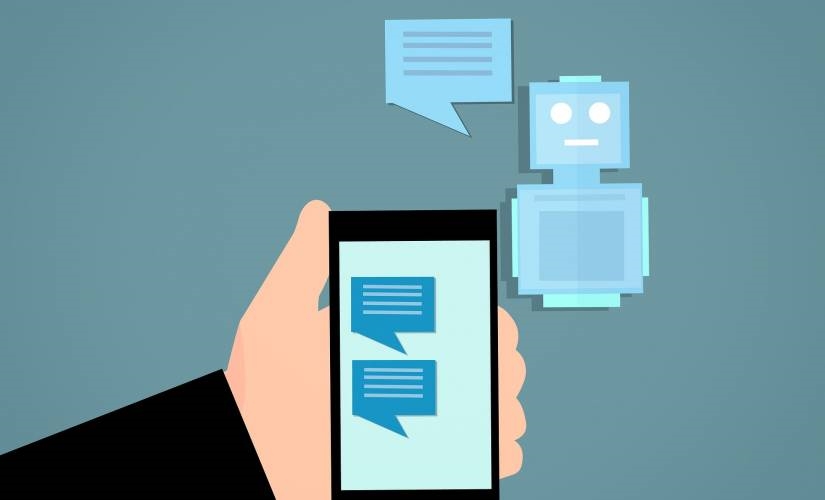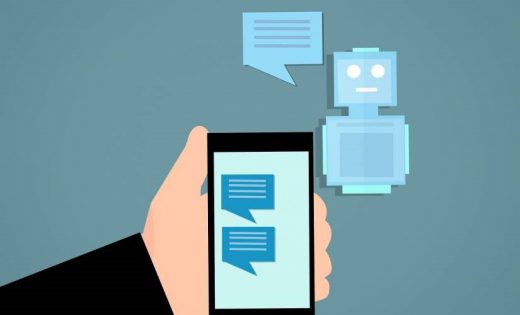If Conversational Chatbots Want to Take Off, They Need to Act Like Robots
If Conversational Chatbots Want to Take Off, They Need to Act Like Robots

Getting people to love the idea of talking to computers instead of people is proving more difficult than we thought.
Two decades after a generation of young internet users logged in to AOL Instant Messenger to talk (sorta) with SmarterChild, chatbots haven’t made much real progress in the eyes of users. Even the one’s industry insiders love to continue to disappoint and frustrate the general public.
Poncho, a favorite weather chatbot that took the form of a cartoon cat, shut down because its gimmick grew stale. Poncho’s cute tone made users more willing to accept its mistakes, but like most chatbots we’ve seen, it couldn’t deliver an experience meaningful enough to justify its existence. And don’t get me started on Tay.
Despite the regular failures, chatbots and the AI behind them still have incredible potential. Unfortunately, AI is more often bandied about as a buzzword than as an actual value point. As a startup mentor, I’m astonished by the number of people who throw “AI” into their pitch decks as the term can magically solve their problems.
People Want Useful Chatbots, Not Novelty
Consumers deserve better. It’s time to give up on the illusion that people will forget they’re talking to a computer.
Everyone knows a computer wouldn’t say, “Uh, come again?” but chatbots say it all the time. They pick out small cues in the user’s text, regurgitate quirky “conversational” phrases, and try to get by using obscure language in hopes that users won’t notice their limited ability to answer questions. The novelty works until users cycle through all the responses and discover the robot behind the curtain.
But what if we didn’t try to hide the robot? What if we just gave chatbots tasks for which they could have transactional conversations so they wouldn’t need to fake the way they’re emulating speech? The technology is closer than ever, but chatbot creators need to shed some of the preconceptions that prevent them from designing better tools.
Google’s latest AI demonstration wowed listeners with its ability to emulate human speech. But the presentation of the chatbot, complete with near-perfect human emulation when setting up a salon appointment, left many with doubts about whether the demonstrations were legitimate. Robots and AI are still years away from being legitimate personal assistants or taking over everybody’s jobs. We still need to teach them basic tasks and have them handle simple transactions.
People want AI conversations that feel legitimately useful, even if those conversations aren’t quite human yet.
That requires a more limited scope. Chatbots still need narrow parameters to showcase their limited functionality, and every time a tech company or a marketing team promises human-level speech and usefulness and delivers the same-old cookie-cutter experience, consumer trust in the chatbot market wanes.
The Struggles of Chatbots
True chatbots rely on two things: machine learning and natural language processing. Most chatbot projects in production use these tools in conjunction with some training program built from real-world consumer language to give their creations the appearance of life. As the capabilities of AI become more robust, creators of chatbots will then leave behind the shackles that have required us to limit the scope of these bots so far. That’s the good news.
The bad news is that chatbots are still struggling to overcome fundamental obstacles. Machine learning and natural language processing aren’t good enough to meet the wide-ranging promises tech companies are making — today’s AI can’t replicate real two-way communication outside of limited, stiff conversations. When users ask chatbots to answer questions, the bots often immediately forget the last question unless it’s on a highly scripted path. It’s like talking to Dory from “Finding Nemo” — every interaction is a blank slate.
For chatbots to sound like real people, they need to learn to hold productive two-way conversations. Managing state and workflow processes are key here: People ask questions in subtly different ways, so chatbots can’t account for all the variables. Even humans have problems in this area. And like some humans who resort to a joke when stuck in an awkward conversation, chatbots still rely on tricks to sound like people — they use filler words like “um,” ask a nonsense question, or say, “I didn’t understand that.”
Bring the Robots Out of Hiding
Creators are so afraid their robots will sound like robots that they don’t embrace the opportunities in which more robot-like chatbots would be useful tools. An effective tool isn’t just about two-way communication and continued conversations; it’s about chatbots that can successfully help users with a specific task. Many companies don’t deploy chatbots in the right use cases. They want flashy consumer-facing chatbots that marketing teams can get the press to write about.
Instead of trying to create something flashy to attract headlines, companies should be focusing on niche chatbots that create value for the people using them.
People wait for hours to listen to customer service representatives read through a standard script; wouldn’t they instead connect instantly to a chatbot that could provide the same level of service? Chatbots can filter all the most straightforward cases away from human support desks, freeing up staff to focus on more complex tasks.
When I worked with the city of San Francisco to create a chatbot, I found that keeping the chatbot’s capabilities purposefully limited to answering fundamental questions about procurement and leaving the gimmicks out of it freed up time for the employees and made compliance more accessible and more standardized.
Chatbots in 2019 won’t become personal envoys, but they can take over mundane tasks like automobile registration or dental bill payments. McKinsey & Co. found that companies could automate 29 percent of customer care. Why not let robots handle the busywork? While they’re plugging away in their niche roles, the AI behind chatbots will continue to improve — maybe leading to a genuinely practical all-purpose chatbot.
The near-term future of the industry isn’t sexy, but it can be functional and helpful if the creators of these tools focus more on what they can do and less on what they can’t. Rather than replace the weatherman with Poncho the cat, give chatbots the grueling call center jobs. The flashy stuff will come later.
Sorry, robots. You’re stuck with the boring jobs for now.
The post If Conversational Chatbots Want to Take Off, They Need to Act Like Robots appeared first on ReadWrite.
(47)


